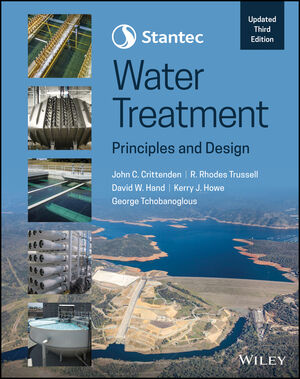Colorado State University researchers are beginning work on a four-year, $3-million project funded by the Environmental Protection Agency (EPA) to improve water quality assessments and address environmental problems related to water resources. Project results will help environmental and conservation officials to map species' habitats, measure biological diversity and monitor water chemistry.
"We rely on clean water for nearly everything we do, so taking care of water resources is critical for humanity," said Scott Urquhart, project director and senior research scientist at Colorado State. "An important step in ensuring clean water is obtaining accurate water-quality measurements."
The Space-Time Aquatic Resources Modeling and Analysis Program, or STARMAP, will create statistical models to predict the environmental quality of lakes, streams, rivers and wetlands. The program will additionally develop mathematical tools to monitor and analyze the condition of the organisms and nonliving components within each water system.
The research, education and outreach funded by the project are expected to substantially improve processes for determining the environmental conditions of water resources. Other expected results include new guidelines for ecological monitoring studies and an unsurpassed database of aquatic environmental conditions.
The program is an interdisciplinary effort drawing on the expertise of statisticians, geographic information systems specialists, ecologists, engineers and other university researchers. The project has three primary goals: conduct research and develop statistical models, train future generations of environmental statisticians, and provide expert assistance to state and tribal agencies.
In accordance with the Clean Water Act, all states and tribes are required to report the conditions of their water resources every two years. According to the Colorado State research team, there have traditionally been inconsistent measurements and a lack of reliable data to make subjective decisions. The Colorado State team is developing tools to help states and tribes make consistent, information-based assessments. "By developing good statistical models, we can formulate accurate predictions for measures of animal life, pollutants and a variety of other indicators for inland aquatic resources," Urquhart said. "We will give these completed models to state and tribal organizations and work with them in developing programs that will allow them to effectively conduct these analyses on their own."
Another thrust of the project is to develop models that incorporate data from different scales and different sources, including onsite sampling and satellite remote sensing. The result will be the most encompassing and accurate estimates of aquatic resources to date.
"It is expensive and time consuming to obtain extensive detailed sampling data from the ground, and the information received from satellite imagery provides only an overview," said Richard Davis, the project's co-principal investigator. "Our plan is to link sample data to satellite data and create models that can be used to make affordable and accurate assessments of aquatic resources."
The research and development work conducted at Colorado State is linked to parallel work at Oregon State University, where scientists received an additional four-year, $3-million grant from the EPA to work on designing effective surveys of aquatic resources. Researchers at the two universities will work in collaboration on the project.



